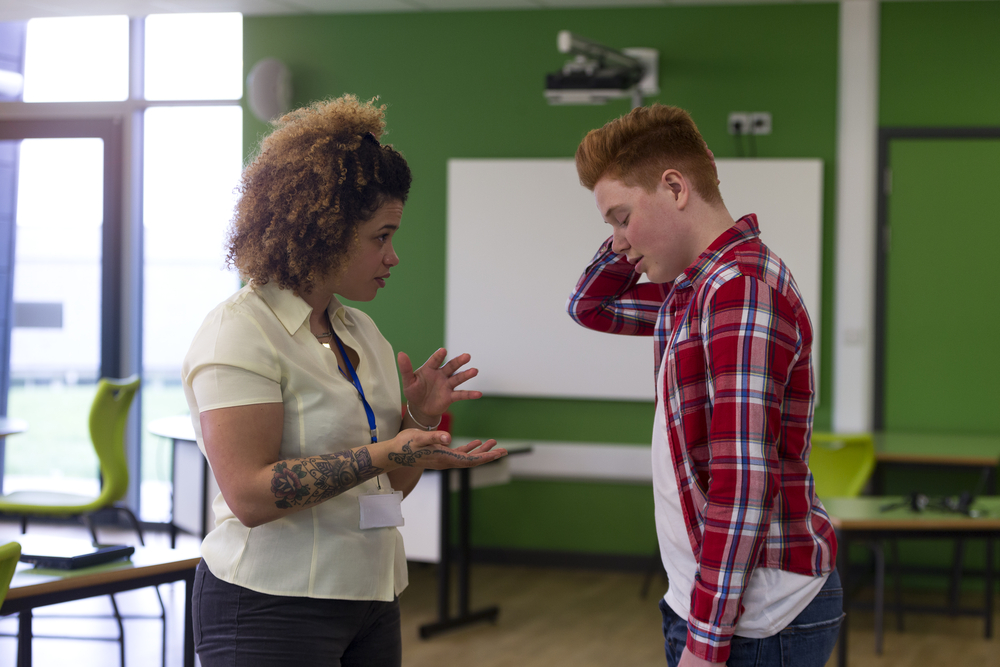To emphasize her point, Charleston, S.C.-based educator Bridget Laird shared the story of a six-year-old boy whose frustrated first-grade teacher, short on patience, shouted at him and made him cry. It was the very first day he’d stepped inside an actual, physical classroom. She immediately ordered him to sit in his seat and take out his books.
“He just sat down and stared,” Laird said.
That teacher’s response was a prime example of how not to handle an emotional situation as schools continue to adjust to the ongoing COVID-19 pandemic, said Laird, the CEO of Wings for Kids, a national nonprofit with teacher training, curricula and after-school programs for low-income schools. Many of their largely Black and brown students have experienced trauma and struggle with mental health.
 Wings for Kids is among an array of organizations nationwide working to help re-acclimate, and sometimes introduce, students to in-person interactions and, given the youth mental health crisis that the pandemic highlighted, to programming where kids can express their concerns and fears and how to manage them.
Wings for Kids is among an array of organizations nationwide working to help re-acclimate, and sometimes introduce, students to in-person interactions and, given the youth mental health crisis that the pandemic highlighted, to programming where kids can express their concerns and fears and how to manage them.
“After months of remote learning,” Laird said, “the crying little boy needed someone to explain the class rules to him, and to then support him lovingly and with compassion.”
Laird continued with another example of the stressors confronting many young people as another school year proceeds. “An 11-year-old girl was teasing another girl because she was still wearing her mask. I had to intervene and have a conversation with the little bullying sixth-grader about empathy and how people making different decisions than her does not mean they’re wrong.”
This year, her district partnered with Discovery Education to provide mental health resources in Charleston’s elementary schools.
The National Education Association’s July 2022 report, “Mental Health in Schools: The Kids Are Not All Right” spotlights some problems and solutions in addressing student well-being. In May 2022, a National Center for Education Statistics report found that educators at roughly half the nation’s elementary and secondary schools say they felt equipped to manage students’ mental health needs; the remainder were less sure of that.
Initiatives aimed at trying to help boost kids’ mental and behavioral wellness include The Healing-Centered Schools Working Group, said Harvard lecturer Rebecca Rolland, author of the recently published “The Art of Talking to Children. Among other provisions, it is encouraging parents in the Bronx, N.Y. to become mental health ambassadors, opening talking about what constitutes mental troubles and challenges. Another is Chicago’s Trauma Responsive Educational Practices Project, with its “30 days of mental health” campaign incorporating that topic into classroom lessons and, in other ways, keeping it top-of-mind year-round.
This school year, Escondido, Calif.’s Classical Academy High School rolled out its “Character Strong” curriculum, building daily mental health exercises into classroom instruction. Principal Stacey Perez said the project fosters community in the classroom through teacher-led daily lessons and activities. It actively asks students questions such as “What would be your dream day?” That gives room to explore educators’ understanding of students and students’ insight into each other.
Those fine details are critical, Perez said. “If our students walk through the door and they’re hungry or they’re tired or they’ve just got in a fight in the car with their parent, our teachers make sure everyone has a chance to tell their story.”
She continued: “Students who feel heard and known are more likely to feel loved and accepted.”
A rise in kids seeking mental health services
Seven in 10 public schools saw a rise in children seeking mental health services in 2021, according to the National Center for Health Statistics. From April 2020 to October 2020, compared to the same period in 2019, emergency room visits to address children’s mental health concerns increased by 24% among 5- to 11-year-olds and 31% among 12- to 17-year-olds, according to the Centers for Disease Control and Prevention.
“Kids who’ve lost family members, families that lost income or homes,” began John King Jr., president of The Education Trust, addressing a recent conference of the National Association of Black Journalists and National Association of Hispanic Journalists. “All of the challenges of disruption of all aspects of everyday life — from church to after-school programs — all of that disrupted. There’s a lot we have to make up for.”
King, U.S. Secretary of Education during the Obama Administration, said President Joe Biden’s administration this year announced over $500 million to expand school-based mental health professionals for the current school year. An additional $1 billion is budgeted over the next five years.
Health, nutrition and other wrap-around supports for families are being added to those trauma-informed and other mental health support systems.
Viewing student academic performance and life experience
In the St. Louis Park School District in suburban Minneapolis, Angela Jerabek said she founded the Building Assets, Reducing Risks project to involve teachers, counselors, police officers and others in viewing students in light of their academic performance, life strengths and challenges. The nonprofit now is in 250 schools and 23 states and Washington, D.C.
“As a team, we manage [to find] not always easy solutions, including assigning tutors, providing computers, holding mediations where there may be conflict at home,” said Jerabek, the organization’s executive director. “We hear about drug issues, fear of deportation, chronic illness, eating disorders. There are students who have anxiety. Our counselors make it possible for them to get passes out of class to center themselves.”
In each school district, Jerabek said the project has helped raise test scores and pass rates; reduce absences and suspensions.
“BARR,” she said, abbreviating the name of her program, “shows you can make big changes by focusing on relationships, without changing the students or the teachers in a school”.
Some districts still haven’t spent mental health funds
“I worry about the districts that did not invest in their students’ mental health,” said Pam McNall, the Atlanta-based founder and CEO of Respectful Ways, a trauma-informed, social and emotional learning curriculum. School districts still have time to spend federal stimulus dollars for academic recovery, including learning loss due to COVID-19, that were part of the aforementioned federal dollars Biden set aside.
McNall said, that, as of May 2022, as examples, Kansas, Michigan, Nevada, New Jersey, Rhode Island, Vermont, Wisconsin and Wyoming had spent less than 2% of their Elementary and Secondary Schools Emergency Response funding. “That doesn’t mean they are not going to spend it,” she said. “Hopefully they’re being strategic and looking at data to figure out where best to spend these funds.”
“These monies are not just for investing in infrastructure,” McNall said. “They are providing mental health services and support — with set-asides for Black and brown youth — during school, after school, over the summer and virtually.”
She continued, noting how essential such programs are: “We need an approach that starts with emphasizing that seeking help for mental health issues is normal. Talking about our emotional lives is a part of the daily classroom experience. And when students don’t have adequate access to mental health care, they don’t have the foundation they need to support them to learn well.”
***
Patrick Riley is a New Jersey-based, award-winning broadcast journalist and author who has worked for, among others, BET, Black News Channel, ESPN, NBC and The Oprah Winfrey Show.



























